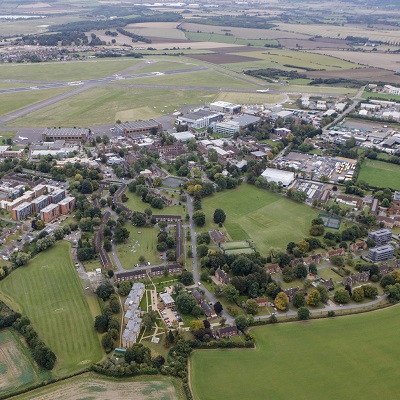Cranfield researchers are delivering a new project to assess the feasibility of using unmanned aerial systems (UASs) for the early detection of marine hazards near to coastal industries, such as nuclear power stations.
The project – part of the UK Drones Pathfinder Programme, which is sponsored by the Department for Transport – will investigate using beyond visual line of sight (BVLOS) operations within a regulatory and safety context for the early detection of marine ingress, including jellyfish and kelp.
Routine wide area data capture by drones could form part of an early warning system which will allow the adjustment of water-cooling mechanisms to protect both electricity generation and the environment.
Dr Monica Rivas Casado, Senior Lecturer in Integrated Environmental Monitoring at Cranfield University, said: “Marine ingress can be an issue for nuclear power plants as it can affect the intake of water required for operations. The successful operation of BVLOS will enable us to detect threats from marine ingress at an earlier stage and prevent disruption to the power plant. The development of BVLOS is an important step in enhancing the capabilities of environmental monitoring using drones for a varied range of applications.”
Cranfield and EDF Energy will deliver the project in partnership with Caintech and the Smith Institute. The consortium will first optimise wide-area UAS monitoring protocols using statistical and mathematical techniques, which will include an academic review of the benefits of extended visual line of sight (EVLOS) / BVLOS operations.
The programme will then undertake BVLOS UAS trials near an EDF nuclear power station later in the year to detect jellyfish and kelp blooms.
Angus Bloomfield, Marine Biology Consultant at EDF, said: “Any industry on the coast which uses seawater can find its operations complicated when seaweed or jellyfish blooms impact protective systems. They can damage machinery and even stop power generation, which could threaten stability of the electricity grid. An early warning system involving drones could allow industries in marine environments to act early and avoid the most dramatic effects these events can bring.”
Dr Alex Evans, Mathematical Consultant at the Smith Institute, said: “It is exciting to see the use of complex and powerful mathematical techniques, in combination with new drone technologies, helping to solve an important industrial problem with such far reaching impacts. It has been a pleasure to support this project and to see the excellent progress made so far as well as the potential for future development.”
Craig McDonald, UAV Operations Manager at Caintech, said: “We are delighted to be working with Cranfield University and EDF Energy on this project. Having worked on this project alongside Cranfield University from the beginning, it is great to see how it has developed. The implementation of BVLOS will greatly improve the area in which we can cover which in turn will mean we can detect marine ingress earlier.”
The project is also receiving funding support from the Engineering and Physical Sciences Research Council (EPSRC).
The Drones Pathfinder Programme is managed by the Connected Places Catapult in partnership with the Department of Transport (DfT) and supported by the Department for Business, Energy and Industrial Strategy (BEIS), the Civil Aviation Authority (CAA). The programme takes a phased approach to achieving routine use of drones within the UK, identifying and overcoming the technical, operational, and commercial barriers for bringing new BVLOS services to the UK.
About Cranfield University
Cranfield University is a specialist postgraduate university that is a global leader for education and transformational research in technology and management.




